2014 Toyota Camry: Car Seat Check


Editor’s note: This Car Seat Check is repurposed from our test of the 2013 Toyota Camry, but our results apply to the 2014 models.
Toyota’s midsize sedan was redesigned for 2012 and the changes for 2013 are minor, including a standard 6.1-inch touch-screen, new interior trim and additional safety feature options. Chances are the brand’s best-selling car pulls family duty quite often. How well does it handle child-safety seats? The Camry’s roomy backseat meant there was plenty of space for our seats, but stiff cushions complicated Latch access and fixed head restraints compromised the fit of our forward-facing seats.
How many car seats fit in the second row? Two, but three car seats almost fit.
What We Like
- The backseat has a wide, flat bottom seat cushion.
- The three tether anchors on the rear shelf were easy to find and connect to when installing our forward-facing convertible.
- The seat belt buckles are on stable bases, easy for kids to find and use when buckling up in a booster.
- There was plenty of room for our rear-facing infant and convertible seats. The front-passenger did not need to move her seat forward to accommodate either one.
What We Don’t
- Although the Latch anchors were only set only about a half-inch into the seat bight, stiff cushions made them a bit difficult to access.
- It was tough to situate our forward-facing convertible and booster; the fixed head restraints pushed the seats forward.
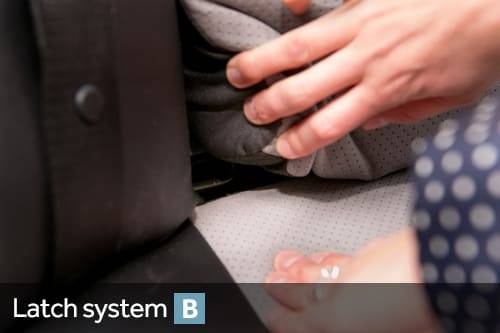
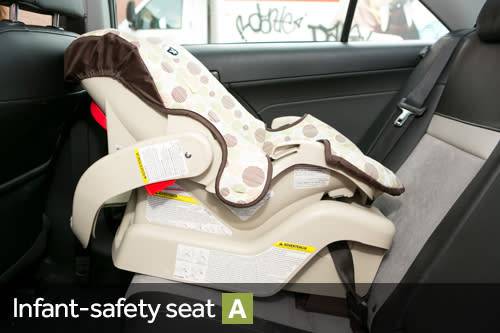
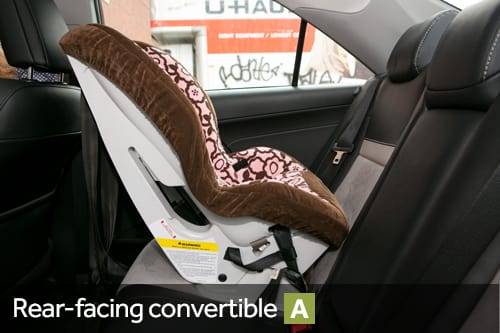
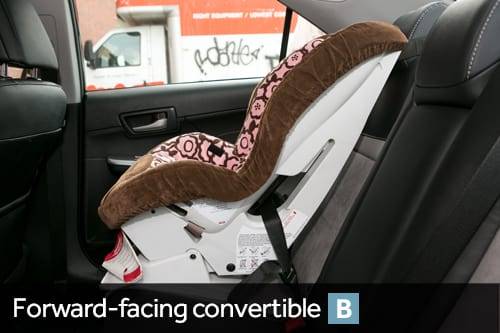
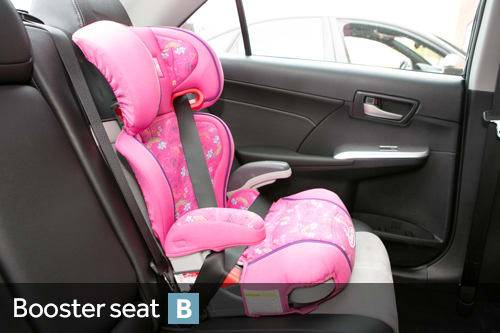
Grading Scale
A: Plenty of room for the car seat and the child; doesn’t impact driver or front-passenger legroom. Easy to find and connect to Latch and tether anchors. No fit issues involving head restraint or seat contouring. Easy access to the third row.
B: Plenty of room. One fit or connection issue. Some problems accessing third row.
C: Marginal room. Two fit or connection issues. Difficult to access third row.
D: Insufficient room. Two or more fit or connection issues.
F: Does not fit or is unsafe.
About Cars.com’s Car Seat Checks
Editors Jennifer Geiger and Jennifer Newman are certified child safety seat installation technicians.
For the Car Seat Check, we use a Graco SnugRide 30 infant-safety seat, a Britax Roundabout convertible seat and Graco TurboBooster seat. The front seats are adjusted for a 6-foot driver and a 5-foot-8 passenger. The three child seats are installed in the second row. The booster seat sits behind the driver’s seat, and the infant and convertible seats are installed behind the front passenger seat.
We also install the forward-facing convertible in the second row’s middle seat with the booster and infant seat in the outboard seats to see if three car seats will fit; a child sitting in the booster seat must be able to reach the seat belt buckle. If there’s a third row, we install the booster seat and a forward-facing convertible. To learn more about how we conduct our Car Seat Checks, go here. Parents should also remember that they can use the Latch system or a seat belt to install a car seat, and that Latch anchors have a weight limit of 65 pounds, including the weight of the child and the weight of the seat itself.
Cars.com photos by Evan Sears

News Editor Jennifer Geiger joined the automotive industry in 2003, much to the delight of her Corvette-obsessed dad. Jennifer is an expert reviewer, certified car-seat technician and mom of three. She wears a lot of hats — many of them while driving a minivan.
Featured stories




